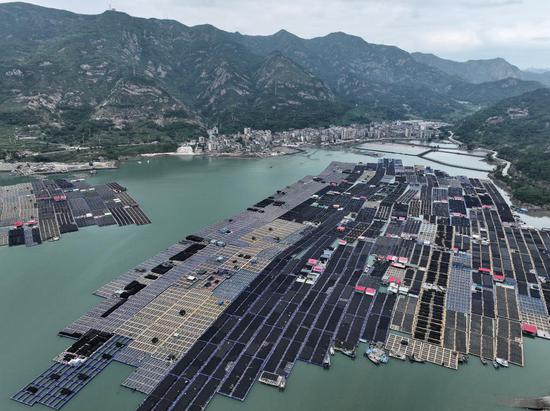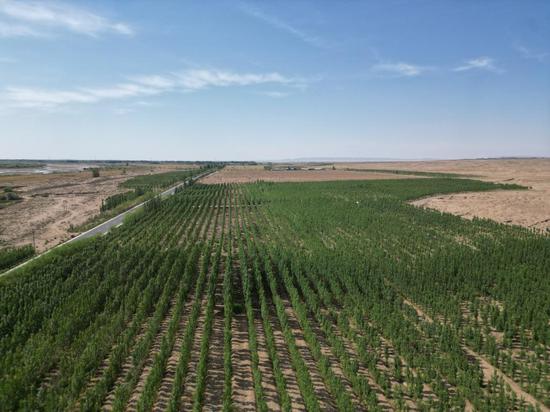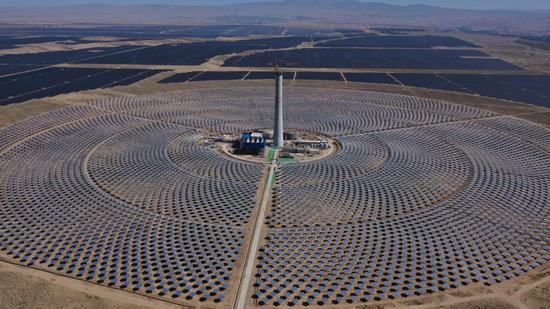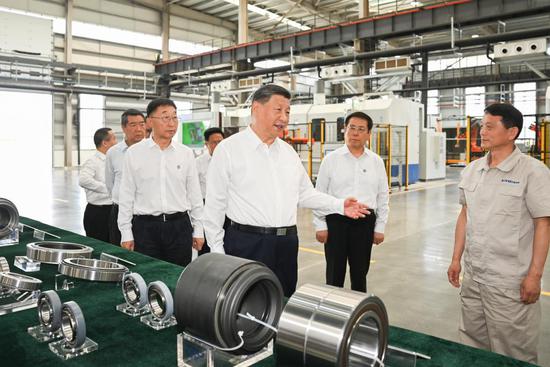Ensuring supply
Solar and wind power are inherently intermittent — their output fluctuates with weather conditions, making supply unpredictable.
On April 28, for example, due to extreme temperature variations, about 55 million people in Spain and Portugal — two countries that source about 80 percent of their electricity from solar and wind — suffered severe power outages that disrupted public transportation, and bank and internet services.
So how will Xinjiang respond to volatility and make the power grid more resilient?
The Xinjiang Fukang Pumped Storage Power Station of the State Grid Xinyuan Company addresses the issue by storing surplus energy when demand is low, said Lu Jiangang, deputy director of the engineering department.
The facility is composed of an upstream reservoir, water conveyance system, underground powerhouse system, ground switch station and a downstream reservoir. The elevation difference between the two reservoirs is approximately 400 meters.
"When electricity demand is low, the plant uses surplus power to pump water from a lower reservoir to an upper reservoir, converting electrical energy into stored energy. When demand peaks, water is released back to the lower reservoir through turbines, generating electricity," said Lu.
Yang Hongtao, chairman of the company, said: "Generally, the station pumps water from the downstream reservoir between 9 am and 3 pm, and generates power between midnight and 7 am, achieving about 80 percent round-trip efficiency."
The first of its kind in Northwest China, the power station commenced power generation in November 2023. It has a bidirectional and double regulation capacity of 2.4 million kW. As of May 14, the power station had operated nearly 15,000 hours and generated over 2.1 billion kWh of electricity.
Yang said the project was a breakthrough in providing flexible power regulation for the Xinjiang and Northwest China power grids, significantly advancing the transformation of abundant wind and solar resources into economic benefits. The facility plays a vital role in promoting Xinjiang's development of large-scale integrated energy bases that combine wind, solar, hydro, thermal, and energy storage.
"Compared with other storage methods, it boasts large-scale capacity, an exceptional safety record and a long operational lifespan," Yang added.
By balancing supply and demand in real time, the facility not only enhances grid reliability but also supports the large-scale adoption of intermittent renewables like wind and solar by about 2.6 billion kWh annually. That saves 165,000 tons of standard coal consumption, and reduces 496,000 tons of carbon dioxide emissions every year.
Lu said the station has six functions: peak shaving, frequency regulation, phase modulation, energy storage, spinning reserve, and black start.
"With the increasing integration of renewable energy capacity in Xinjiang, the demand for flexible power sources will continue to rise. After starting operations, the station has had a significant impact on the safe and stable operation of the power grid and the integration and consumption of renewable energy," Lu said.
However, the role of the power plant transcends grid stabilization. Lu said its construction had helped in the acquiring of valuable building experience and nurtured talent for future projects. Exchange programs and training sessions have since been held to share construction and operational expertise across Xinjiang.
The power station has also improved the fragile local environment — characterized by high altitudes and climate extremes of aridness and cold — through reservoir water evaporation that increases precipitation.
After conducting research, Lu and his colleagues carefully chose seeds and cultivated shrubs sourced from nearby regions, to increase the vegetation coverage and improve the local ecology.
"Two years after the station's operations began, wapitis (elks), foxes and wild boars reappeared and birds have settled in the reservoirs in summer, which is a sign of a better environment," Lu added.


















































 京公網安備 11010202009201號
京公網安備 11010202009201號